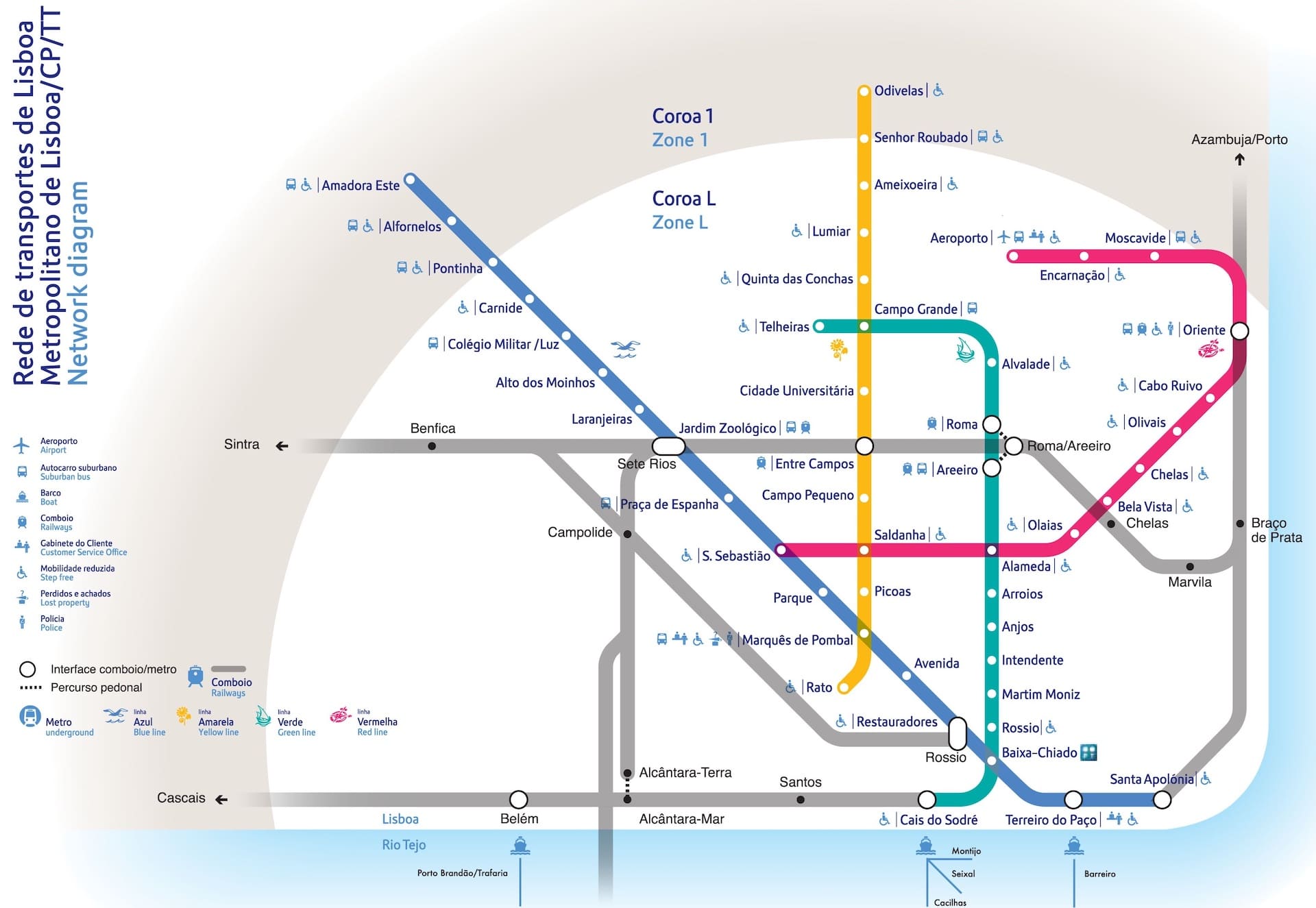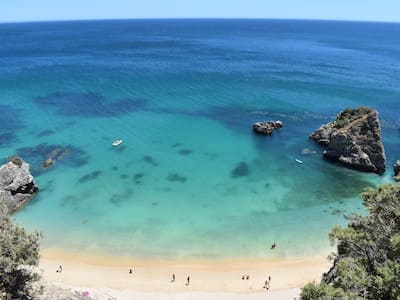The four clean, safe, and artful lines of the Lisbon metro (shown on the map above, present at any station) connect downtown's waterfront to the northern districts and the suburbs of Amadora and Odivelas. The first lines opened in 1959 and are still expanding. They do not, however, reach the Belém district or the neighborhoods on the tallest hill around the castle (Graça and the highest part of Alfama). Still, the metro is the most efficient way to get to many of the city's attractions and hotels between the hours of 6:30am and 1am.
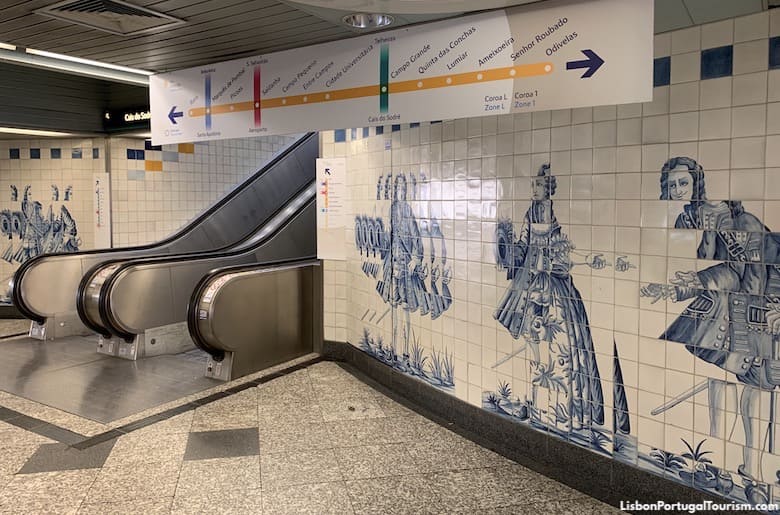
Campo Grande station, with a decoration imitating baroque tile panels.
Artistic projects decorate most of the stations, including themed tiled walls by contemporary artists. The red line is the most impressive, but other stations of this underground gallery feature works by prominent Portuguese artists: Vieira da Silva in Rato and Cidade Universitária, Júlio Pomar in Alto dos Moinhos, and Maria Keil in most of the stations of the green and yellow lines.
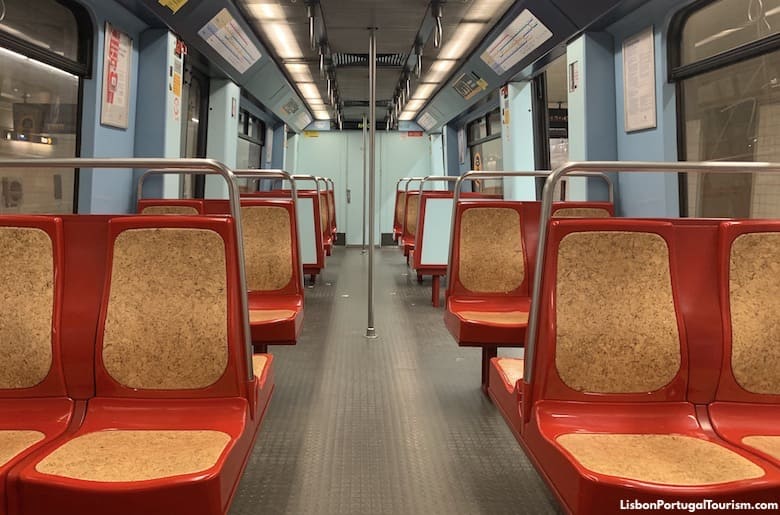
Inside a Lisbon Metro train
The blue line is the one most used by tourists, as it goes down Avenida da Liberdade to Baixa and the train station of Santa Apolónia. The green line is also popular, especially its stops in Rossio Square and Cais do Sodré station. The red line connects the Parque das Nações district and the airport to the other lines. The yellow line is mostly used by locals, as it heads north, away from the main tourist areas.
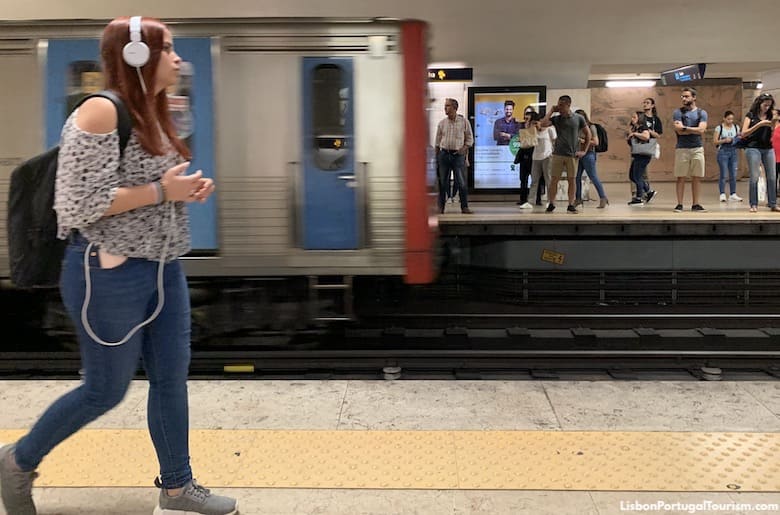
Saldanha station of the Metro, which connects the yellow and red lines.
The frequency of the trains depends on the time of day and day of the week. They run every 5 to 7 minutes during rush hours, and as much as 10 to 12 minutes at night.
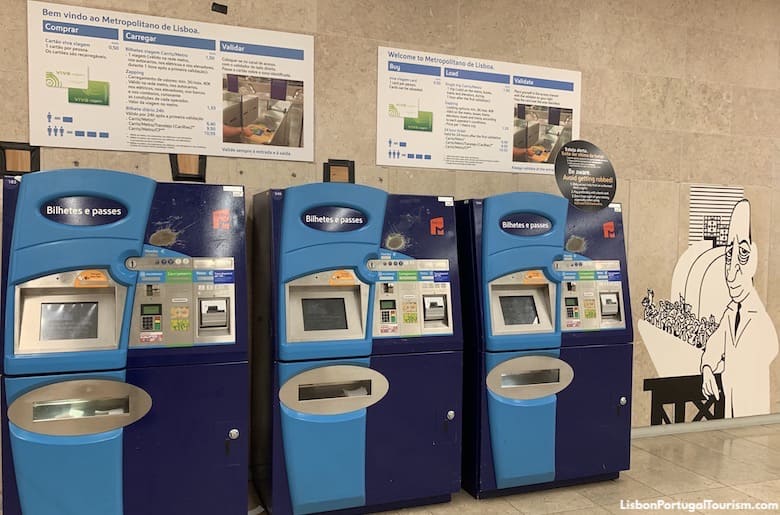
Lisbon Metro ticket machines
Metro Tickets and Fares
Rides are FREE with the Lisboa Card, otherwise you'll need to use a contactless card or mobile device to pay when you access the platforms (touch in and touch out on the card readers), or buy your ticket (a magnetic card) from the machines found at every station (they have instructions in English, French, and Spanish, in addition to Portuguese). Be sure to keep your ticket handy because you'll need to scan it again to exit.
There are two fare zones, but all of the tourist areas and the airport are within zone 1 (zone 2 covers the suburbs). A single ride is €1.85, but there’s a 24-hour ticket for unlimited travel for €7.00. That 24-ticket includes the city’s buses and trams.
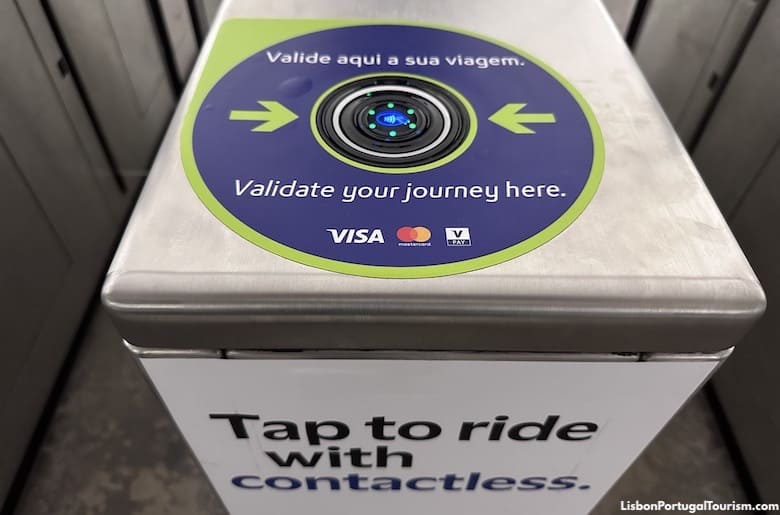
Using a contactless card or mobile phone is the easiest way to pay for a Lisbon Metro ride
Navegante Card
If you don't pay with your contactless card or phone, the first time you ride the metro, you need to purchase the magnetic Navegante (formerly “Viva Viagem”) card. It costs €0.50 and can be used to recharge future trips or the 24-hour ticket mentioned above. A Navegante can only be used by one person, so if you’re traveling as a family, every member should get their own. This card is valid for 12 months, and can be used in all of Lisbon’s urban and suburban transportation. Inconveniently, this card only accepts one type of fare at a time, meaning if you charge metro tickets, you can’t then add train tickets. The only way around this is to charge the card with a ticket called “Zapping,” which is a credit with amounts ranging from €3 to €40 (it can be charged at any metro ticket machine). It can then be used to pay all public transportation, deducting €1.66 for every metro, bus or tram ride, €2.00 for every train journey, and €1.55 for the ferry to Cacilhas or €1.45 for the ferry to Trafaria/Porto Brandão. With the 24-hour ticket and the free Lisboa Card access, this Zapping may not be very useful for tourists.
To check the balance of your card, simply use a ticket machine at any metro station.
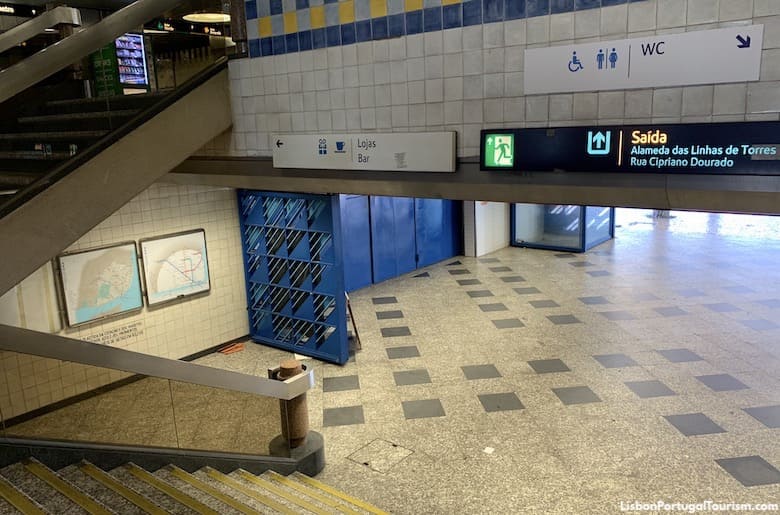
Exit of Campo Grande station to the bus terminal
Major Stations
Baixa-Chiado
It’s on the green and blue lines, and one of the busiest stations. One exit leads to the flat streets of Baixa, while another is reached through a steep series of escalators which lead to the Chiado district on the hilltop.
The Baixa exit is a short walk from Rua Augusta and the bottom of the Santa Justa Elevator, while the Chiado exit is close to the top of the Santa Justa Elevator, Carmo Convent, and the neighborhood of Bairro Alto.
Marquês de Pombal
It connects the blue and yellow lines, so it’s just as busy as Baixa-Chiado. From this station, you may walk down Avenida da Liberdade, walk up to Edward VII Park, or visit the Medeiros e Almeida Museum.
Cais do Sodré
The last station on the green line links to the trains to Cascais’ beaches and to the ferries to Cacilhas (where many tourists hop on a bus to the Cristo Rei monument or the beaches of Costa da Caparica). It’s very busy with commuters during the day, and with the local youth at night, for the bars nearby.
Campo Grande
Connects the green and yellow lines, and to a bus terminal with buses to different destinations in the Lisbon region, like Óbidos and Ericeira. Across the road from one of the two exits is also Pimenta Palace, the main branch of the Lisbon Museum.
São Sebastião
It’s on the blue line and also the first station of the red line. One of its exits leads to the El Corte Inglés department store, and it’s just a few feet from the Calouste Gulbenkian Museum.
Oriente
The busiest station on the red line is the gateway to the Parque das Nações district (with its famous Oceanarium and the popular Vasco da Gama mall). It connects to long-distance trains and buses.
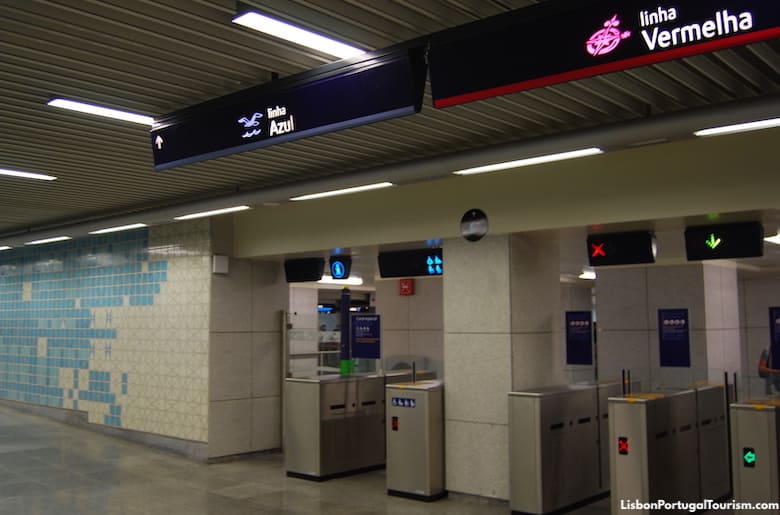
Access to the platforms at São Sebastião station, which connects the red ("vermelha") and the blue ("azul") lines.
Access to the Disabled and Priority Seating in the Lisbon Metro
Only some stations of the Lisbon Metro are accessible to those on wheelchairs or with mobility issues. That means an elevator to the train platforms. All stations on the red line (from/to the airport and Oriente Station) have them, but many of the ones on the yellow, blue, and green lines (including many of the main ones in the city center) do not. Most do have escalators. You can see which stations have wheelchair access on the map at the top of this page.
All trains of the Lisbon Metro have priority seating for pregnant women, elderly passengers, passengers carrying small children, and passengers with disabilities. If you’re one of those people, don’t hesitate to ask for a seat when the train is full, and remember to offer your seat if you see a passenger who has priority.
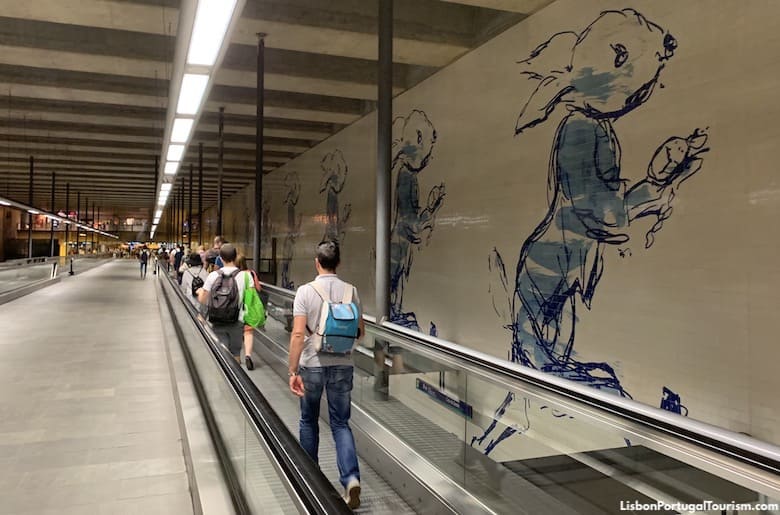
The white rabbit from Alice in Wonderland in the metro station of Cais do Sodré
